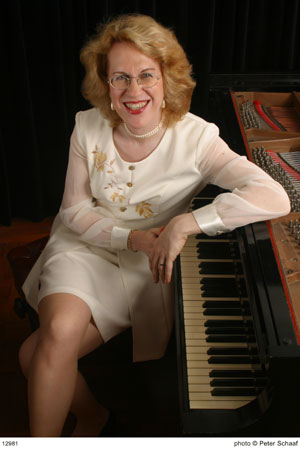A stellar concert
Music often finds itself in a curious double role: it can stand alone or it can support the other arts. The Oakland East Bay Symphony held its spring concert Friday, April 17, and three of the four pieces referenced another form.
 Led by Michael Morgan, the orchestra made Oakland’s lofty Paramount reverberate with rich horns in Nikolai Rimsky-Korsakov’s Russian Easter Overture. Extracted from the early Russian Orthodox Church service, the music was compelling even to the uninitiated. Sonorous trumpet and substantial trombone intoned a Father’s offices, blessing us with long beard and swinging censer.
Led by Michael Morgan, the orchestra made Oakland’s lofty Paramount reverberate with rich horns in Nikolai Rimsky-Korsakov’s Russian Easter Overture. Extracted from the early Russian Orthodox Church service, the music was compelling even to the uninitiated. Sonorous trumpet and substantial trombone intoned a Father’s offices, blessing us with long beard and swinging censer.
The stern melodies, taken from the 1772 Obikhod, mingled with flowery flute and violin runs, a more pagan appreciation for spring. Sharp flute and triangle cut across bassoon and French horn, bringing to mind keening sopranos and basso profundos of the Easter midnight mass, as they intone “Gospodi pomilui,” Old Slavonic for “God have mercy on me.”
The exemplary brass made this work.
Rimsky-Korsakov’s most famous student, Igor Stravinsky, followed with the 1947 orchestral suite version of Petrouchka, his ballet of three dolls who come to life for love, jealousy and murder.
The incidental nature of the music did nothing to keep the piece from standing on its own, but one could wish for the full ballet.
Stravinsky held off on the symphonic form until later in life, preferring the fluidity of ballet. His primal language, derived from folk material, and thrusting vocabulary lent themselves to dance.
Extending the musical form, he chose distinct modalities to represent Petrouchka’s puppet and human sides, simultaneous chords of C major and F-sharp major, to jarring effect, and introducing the world to bitonality. This, on top of the carnival orchestration, cross-rhythms and surreal story line caused waves in the art world.
Morgan’s conducting was energetic, and the performance vivid.
After intermission Mark Lanz Weiser’s “Four Scenes” from the recent thriller The Story of Tocatta and Fugue showed what a strings-only orchestra can create. “Moons” was rustling and ethereal, with material that aspired but shied from resolution.
His mood became melancholy with viola, then slowly built as each string section entered. Weiser has a facility for film score, with small motions and big bones. He even paid homage to Philip Glass, a master of vigorous minimalism and long linearity. Though I would be curious to see the film, this suite stood on its own merits.
The pièce de résistance was Beethoven’s Piano Concerto No. 1 in C major, with Sara Buechner on piano. This early Beethoven work held his breadth of vision, if not his later subtlety, and Buechner was absolutely priceless. Majestic and lyrical, elegantly nimble, she gave us a deep interpretation of Beethoven that helped us see the clarity of his thought. And her dynamics! An entire dimension from intimate to triumphal.
Morgan and the orchestra were no slouches either. They knew Beethoven. Not with a broad brush, but with deft strokes they painted. The audience responded with well-deserved standing ovations.
The OEBS completes its season May 15 with a concert version of Kern and Hammerstein’s musical, Show Boat. The race issues that the musical raises will be explored in a free forum on Saturday, May 2 at 2:00 at the Oakland Senior Center, 200 Grand Ave.
Details on the concert at www.oebs.org.
—Adam Broner
Originally published in the Piedmont Post
